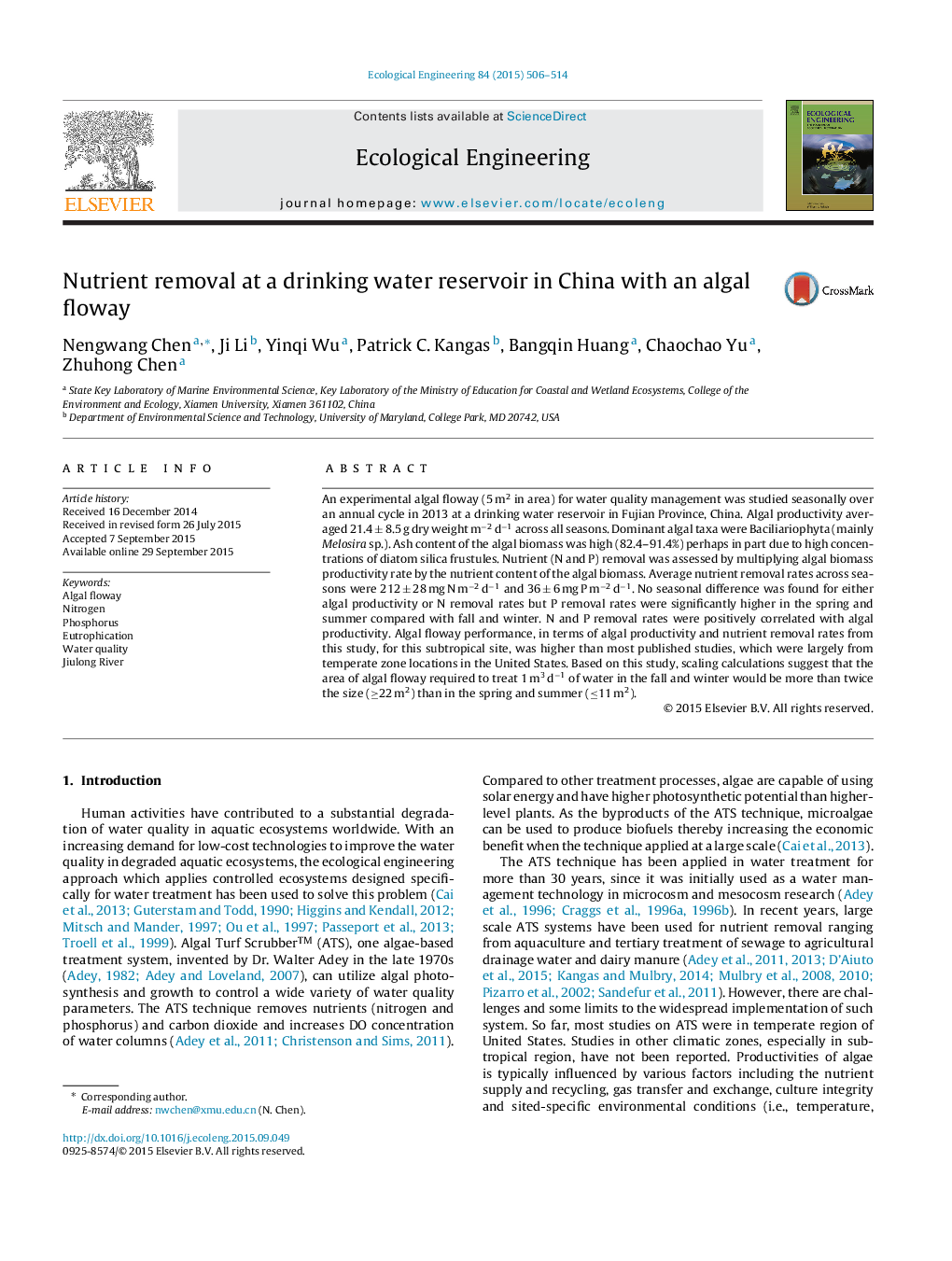| Article ID | Journal | Published Year | Pages | File Type |
|---|---|---|---|---|
| 4388820 | Ecological Engineering | 2015 | 9 Pages |
An experimental algal floway (5 m2 in area) for water quality management was studied seasonally over an annual cycle in 2013 at a drinking water reservoir in Fujian Province, China. Algal productivity averaged 21.4 ± 8.5 g dry weight m−2 d−1 across all seasons. Dominant algal taxa were Baciliariophyta (mainly Melosira sp.). Ash content of the algal biomass was high (82.4–91.4%) perhaps in part due to high concentrations of diatom silica frustules. Nutrient (N and P) removal was assessed by multiplying algal biomass productivity rate by the nutrient content of the algal biomass. Average nutrient removal rates across seasons were 212 ± 28 mg N m−2 d−1 and 36 ± 6 mg P m−2 d−1. No seasonal difference was found for either algal productivity or N removal rates but P removal rates were significantly higher in the spring and summer compared with fall and winter. N and P removal rates were positively correlated with algal productivity. Algal floway performance, in terms of algal productivity and nutrient removal rates from this study, for this subtropical site, was higher than most published studies, which were largely from temperate zone locations in the United States. Based on this study, scaling calculations suggest that the area of algal floway required to treat 1 m3 d−1 of water in the fall and winter would be more than twice the size (≥22 m2) than in the spring and summer (≤11 m2).
